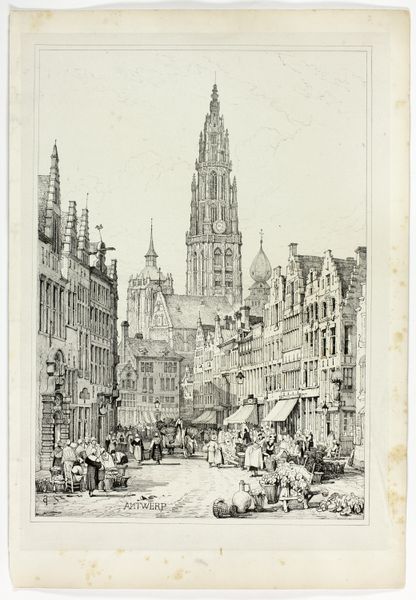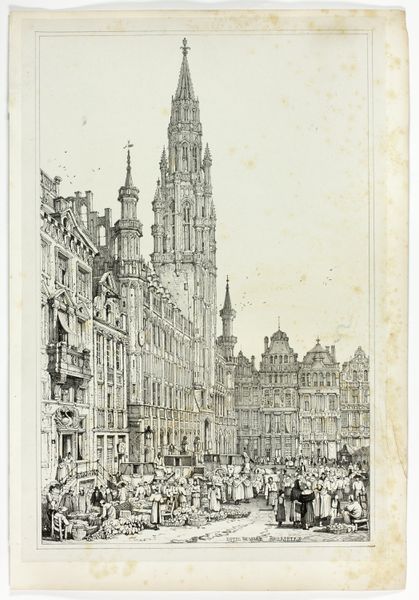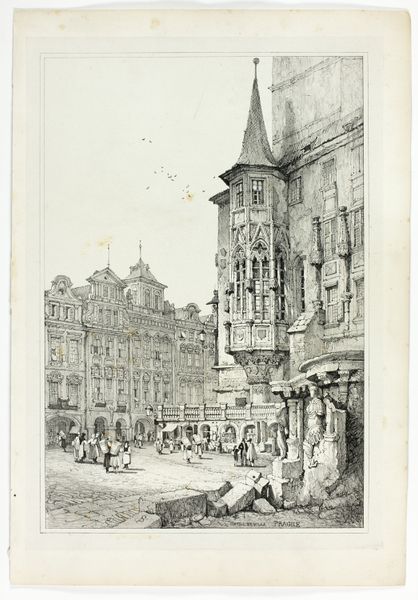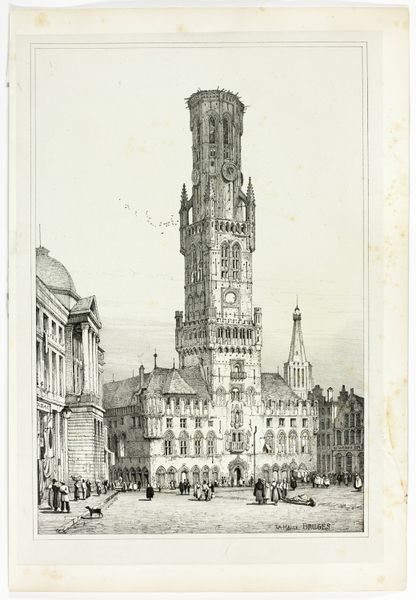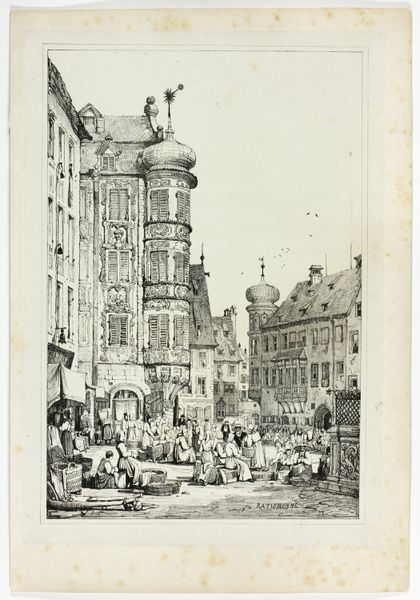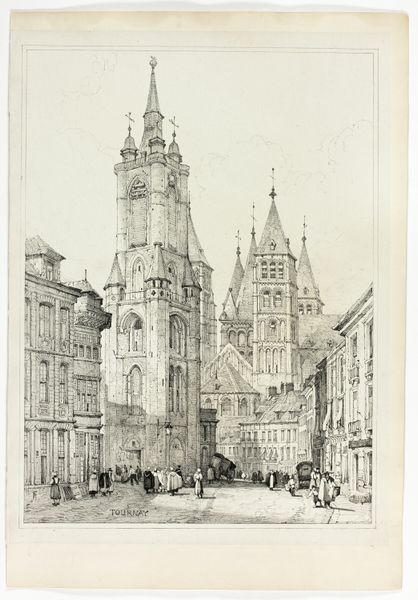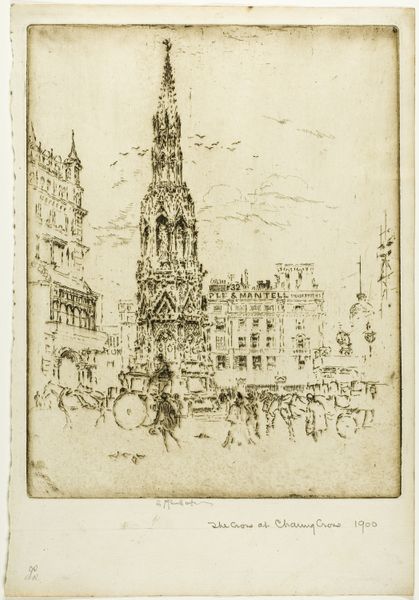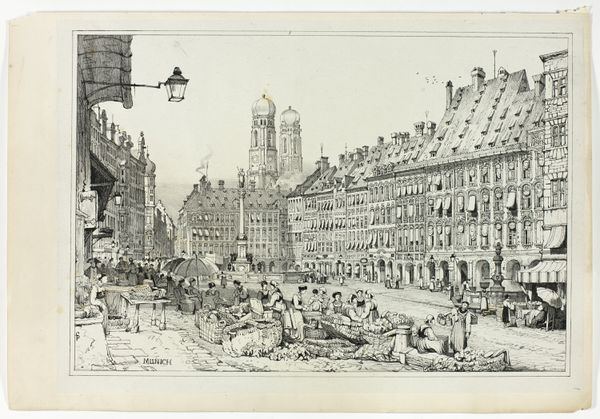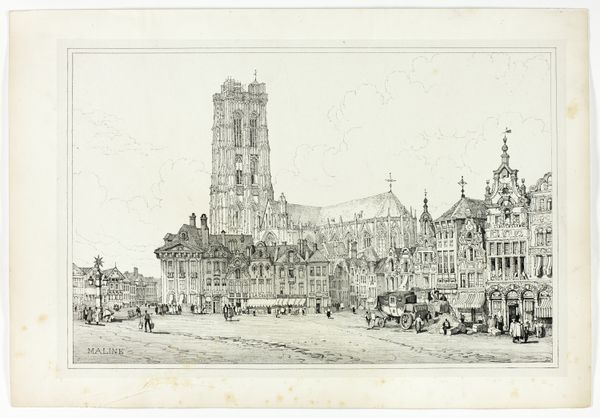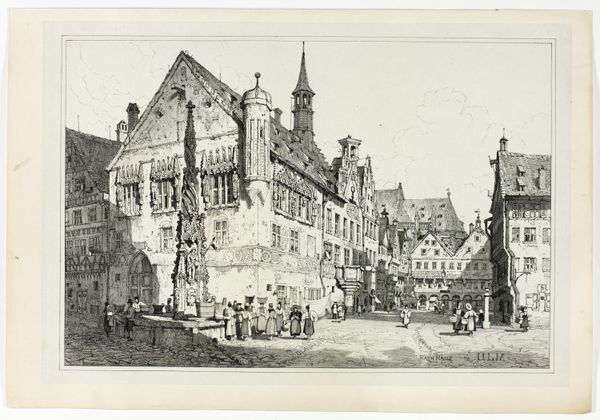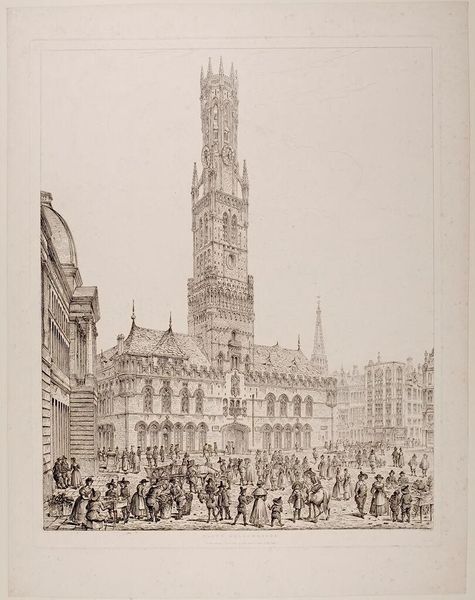
drawing, lithograph, print, paper
#
drawing
#
lithograph
# print
#
landscape
#
figuration
#
paper
#
romanticism
#
line
#
cityscape
Dimensions: 290 × 425 mm (image); 310 × 445 mm (primary support); 345 × 500 mm (secondary support)
Copyright: Public Domain
Curator: Samuel Prout’s lithograph, simply titled “Augsburg,” created in 1833, gives us a fascinating glimpse into the architecture and society of this Bavarian city. Editor: My first impression is the incredible detail rendered solely in lines. The overall greyscale palette contributes to a certain solemnity. There's an almost architectural precision, yet it captures a vibrant atmosphere, almost chaotic. Curator: Indeed, Prout was known for his architectural renderings. He skillfully documented the buildings and urban spaces across Europe, responding to a burgeoning interest in travel and architectural preservation in the 19th century. “Augsburg” serves almost as a historical record, doesn't it? The way the marketplace pulses with movement seems secondary to the facades he records. Editor: But that is precisely what elevates it from being just a record! Note the careful compositional choices: the linear perspective guides the eye towards the imposing tower. Then there's the contrast between the intricate facades and the implied volumes created by the light falling in that deep archway. It’s the masterful control of line weight and density which shapes the atmosphere. Curator: True. Consider also the social dimension: it portrays daily life, commerce, people traveling, all set against the backdrop of grand architecture. Remember, prints and lithographs such as this played a vital role in disseminating images and knowledge in a pre-photography era. Think of the market scene as a mirror to economic life. The print caters to those who wanted to explore cities they may never visit. Editor: I agree. The linear detail, rendering not only structure, but also textures -- the play of light on stone versus timber, even individual clothing—demands close observation. It goes far beyond a simple visual document. Curator: We shouldn't underestimate Prout’s Romantic lens here, as well. While precise, this print evokes a nostalgic and idealized vision of the medieval city—part of that wider 19th century obsession with the past. The somewhat idealized market activity feeds into this theme. Editor: A fair point. The lines, while objective in rendering, do communicate an emotion – reverence. Despite my focus on structure and detail, I acknowledge the affective element: a melancholy feeling permeates the image as a whole. Curator: Seeing this Augsburg square through Prout's eyes offers valuable insights into 19th-century urban experiences and visual culture. Editor: For me, I leave more impressed by Prout’s subtle and masterful application of line to not just map a place, but a particular mood.
Comments
No comments
Be the first to comment and join the conversation on the ultimate creative platform.
